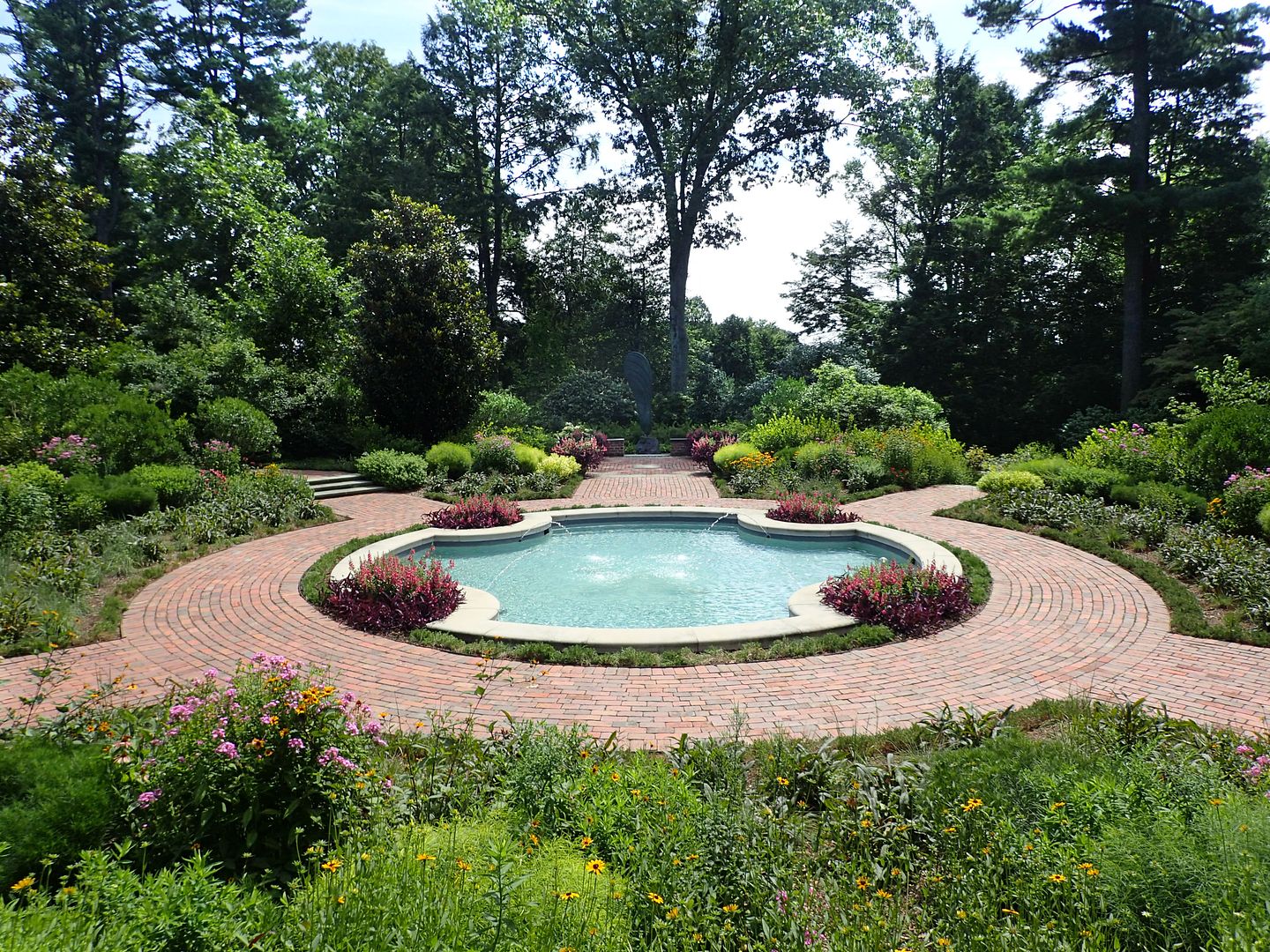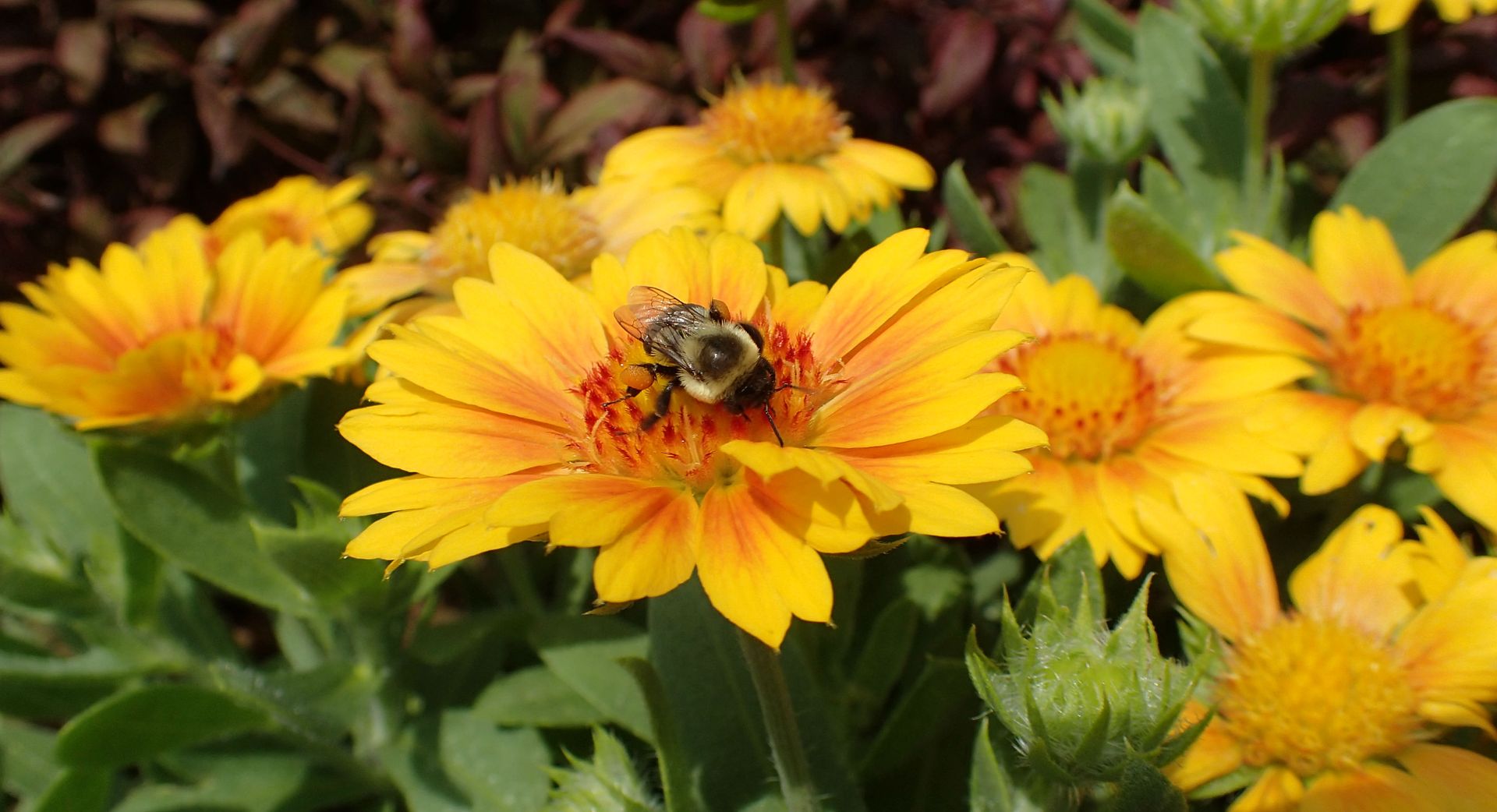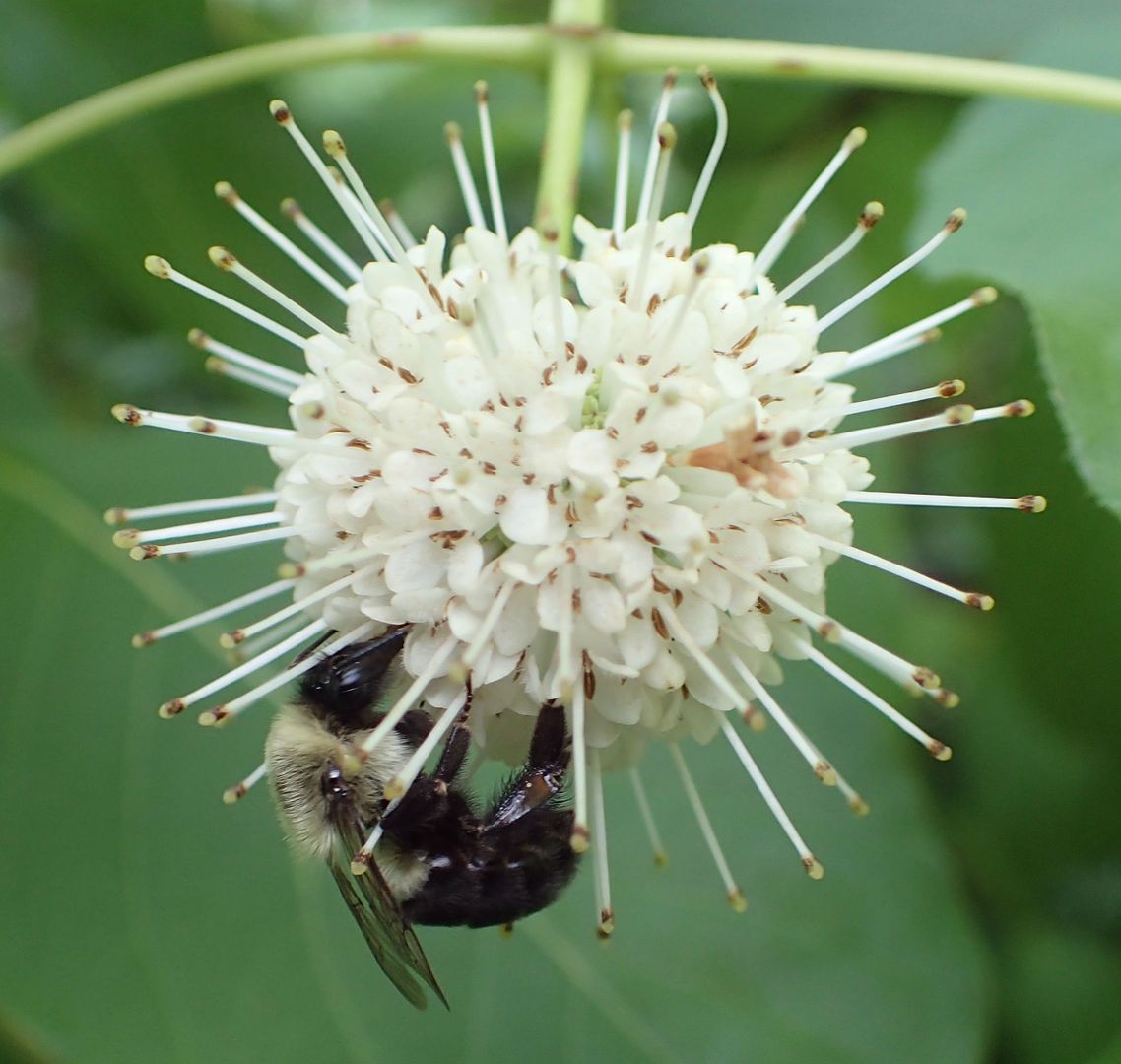I was at the Mt. Cuba Center a few weeks ago and was glad to see all the different plants in bloom. Some of these I had never seen flowering before and was quite amazed to realized I'd been walking past shrubs and plants at the Mt. Cuba Center I'd never seen flowering all because I'd never visited on a certain week.
First though, while around the Round Garden, I paid a visit to the adjacent Trial Garden where they seem to be revisiting Coneflowers. They had already done these a few years back but I think they had different criteria back then. I know in recent trials with Monarda, and Phlox, they mention which ones Hummingbirds, Butterflies, and Bees favor so that would be a nice thing to know when deciding which of the hundreds of different Coneflower varieties they like.
So this is a fairly standard coneflower. I don't know if it's the true species or a cultivar but it's close enough. I recall looking around at all the colorful and wondering why they hadn't included 'Rainbow Marcella' which I bought this past spring.
This is a plant back in my garden and the flower which the squirrels damaged but I was otherwise pleased with them. Now of 6 plants only 4 have flowers but only 1 of them has the cultivar color as advertised. I'd been thinking I was ripped off.
Well then I found it in the Mt. Cuba Center trial garden and realized the orange in the petals quickly fades out of the flowers. Also of all the cultivars in their trial it was among the shortest and I believe 1 of the 5 plants they had was already dead. :(
But once their trial ends, I'll be sure to read over the results carefully and if there's a particular cultivar or true species that does well I'll be sure to add it.
Two natives I've overlooked in my perennial garden are Blanket Flower (seen above) and Stokes' Aster which I wasn't able to photograph well. I installed a perennial garden in the front yard this year, right up against the side walk so people walking by can admire the flowers. If it were just a little bit longer I would fill it in these two plants for sure.
There were lots of different Silpheum species flowering there. Many of which I can't identify off hand, and actually I was surprised to learn there were more than 4.
Mohr's Rosinweed I did recognize though. Silphium mohrii has lighter yellow flowers and the foliage has white hairs too, giving the stem and leaves a pale appearance. This was also the first place I ever encountered the plant. On previous visits with actual classes the gardener, David, had been reluctant to point this very obvious plant out. It's not exactly native to Delaware nor commercially available. It was a gift from someone which they planted and grow in the meadow. Considering the norther most range for the species is a population in Tennessee I imagine they were surprised to discover it's cold hardy.
Wild Petunia, Ruellia humilis. To be perfectly honest, if this wasn't flowering I'd have never even noticed it. This is one of those native plants that you have to plant ~25 of right next to one another to form any sort of an impact because each individual plant on it's own is kind of pathetic. Sometimes they'll have a cluster of 4 flowers on them but that's about the most they'll ever have at one time. So when grown as if it were a clumping aster the impact is easier to appreciate. This one may have been a seedling that came up on its own.
Meadow Beauty, Rhexia virginica. I wish I could say more about this one because the flower is interesting. It's a pond plant, or maybe riparian plant that has a wonderful pink flower.
Asclepias incarnata. I always love wild strains of Swamp Milkweed. They seem to grow more vigorously and branch out more at the top of the plant than traditional plants sold in stores. Also the flower color is more wild. Some of this one even has pink spots on the flowers while other parts of it are more uniformly patterned.
And of course there were Monarchs swooping about along with Tiger Swallowtails, Red Admirals, and a few other butterflies. I found a Monarch Caterpillar chomping away on a plant of milkweed.
Plum Leaf Rhododendron, R. prunifolium, was a real stand out at the gardens. Partly because of their size and partly because of the display they were putting on. This is a species native to a very narrow strip between Georgia and Alabama and yet they still manage to achieve 10' tall growing in Delaware. (I've purchased two of these via an online dealer to see if they're hardy in zone 7).
The Mt. Cuba Center has about a dozen shrubs planted around its property and each one was covered in large clusters of orange/salmon-colored flowers. Some hued more red while others were orange but salmon-ish was the norm.
There wasn't a whole lot of pollinator activity with them but that's generally the case with Rhododendrons. They're ideally pollinated by large swallowtail butterflies who's wings rub against the pollen anthers and then the stigma to ensure pollination. Hummingbirds might also do something similar but I don't think this has been scientifically proven (though it likely happens).
The only bees I saw taking an interest in the flowers were these tiny sweat bees who couldn't help but take advantage of all the pollen being offered.
Another large shrub that was flowering heavily was Summer Sweet, Clethra alnifolia which is seen here on the background with all the white flowers.
Summer Sweet is sometimes called Sweet Pepper Bush because of the seed heads looking like peppercorns waiting to be ground, though you'd never want to do that with Clethra. It's not poisonous but isn't pepper either.
Another name it goes by is Sailor's Delight referring to it's sweet
fragrance which is know to travel a great distance in the right
conditions. This plant is at home in a damp forest understory or along
water ways and like filtered to full sun.
I couldn't tell if this was Bugbane or Doll's Eyes. Both are fairly similar-looking and I think in the same genus, Actaea. Some of these used to be in Cimicifuga but I believe they've been consolidated.
Honeybees work both Clethra and Actaea but I don't think they're very happy about Actaea. Likely something about the irritating smell of Actaea seems to make them angry while working this plant. They are obviously more on edge and seem to fly directly into other bees working the flowers. Things are more calm and easy going around Clethra.
Buttonbush, Cephalanthus occidentalis, was another bustling hub of bees. These photos were actually taken at my house where I grow 3 of these wonderful shrubs. In talking with the gardeners at the Mt. Cuba Center I often ask them why they don't have certain things. And walking the gardens this past weekend I was happy to see they have added this one!
I took pictures of the flowers from the shrubs in my yard in New Jersey though because curiously enough they weren't flowering there in Delaware... So next weekend I'm sure their button bush plants will be blooming.
Although I have to say they weren't planted where I would have planted them. They're at the top of their meadow garden. (top of a hill that is.) Whereas in nature they usually occur growing along the banks of lakes and streams. Where they have them isn't a bad location, just not where they'd be found in the wild. Their meadow garden, I believe because of the slope, allows them to grow things that like water along it. For example they have Joe Pye Weed at the top too as well as by the ponds and it does fine in both locations.
Along their forest path they had some native Lilies growing. And these are some of the harder ones to grow in my experience. The Mt. Cuba Center makes it look easy as they have several nice big plants, each with lots of blooms to them. In general the plant opens one flower at a time, but because a plant might have 15 flower buds on it, this prolongs the bloom.
Ideally they're pollinated by large swallowtail butterflies and possibly hummingbirds whose' wings and feathers brush up against the pollen anthers and make contact with the stamen. While I didn't witness that I did see loads of little sweat bees stealing the pollen. What were clearly females were becoming covered in pollen and what were likely males kept pouncing upon them to mate.
These actually aren't pollinating the flowers because they're not making any contact with the stamens.
Their meadow garden was growing nicely. This is a combination of Little Blue Stem, Big Blue Stem, Indian Grass, and a few dozen others. This main section is mainly comprised of grasses though. Flowering plants were kept to a minimum on purpose because the late Mrs. Copeland felt there were few things as calming as seeing the wind casting waves across a grassy meadow. And honestly I think she was right.
Becasue flowering plants are obviously a big part of a meadow they're grown mostly at the top of the hill, out of view from the lower areas. They have a great collection here but early summer isn't the best time to view them. Goldenrods, Liatris, Perennial Sunflowers, Wild Senna, Black-eyed Susans, Joe Pye Weed, Milkweeds and loads of Asters all grow among the grasses.




























